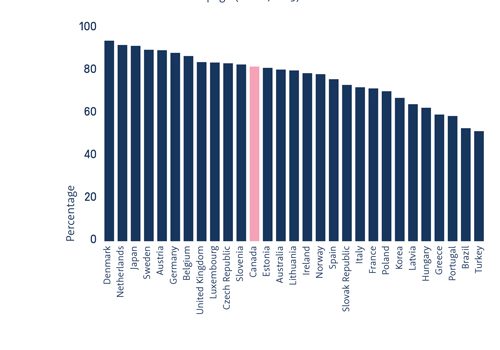 By Taylor Goucher
By Taylor Goucher
The construction and foundational components of workforces around the world have fundamentally changed over the last year, and it is critical to understand future trends, strategies, and tools that will help determine success moving forward.
Companies must look towards the future rather than staying stuck in antiquated ways of doing business. If they don’t, there will be serious implications affecting their longevity and ability to grow. As a company that has successfully managed a remote workforce for over six years, we have identified several key factors companies should consider when building their workforce of the future:
1. Working environment
2. Measurement and management of performance
3. Robot Process Automation and Artificial Intelligence
One of the first things to consider when analyzing the future workforce is the work-from-anywhere phenomenon that has been widely adopted as a result of the pandemic. Companies are now realizing that they can capitalize on talent from across the globe, to facilitate their growth and they don’t necessarily need to be in the same office. Similarly, employees are now seeking a flexible working environment; one that allows them to work remotely some or most of the time.
This change in the working environment has had a significant impact on Connext Global Solutions in two ways. Companies that have been unable to grow due to the inability to fill critical open positions are now re-thinking the structure of their workforce and partnering with outsourcing firms, like Connext, to help support their growth with remote staff. The largest companies in the world have been doing this for years, and now small and middle market companies are leveling the playing field by using remote global teams. Secondly, the flexible work environment is challenging the way we balance client and employee satisfaction. Most employees want a flexible work environment; however the increased likelihood of distraction, higher potential for internet outage, and general (perceived or actual) lack of productivity is unsettling for clients.
So how do you balance the effectiveness of your workforce with the overall satisfaction of your employees? I don’t think we know yet. There are countless studies and reports demonstrating the pros and cons of every possible solution. One thing we know for certain, you must plan for changes in the future working environment and have a strategy that optimizes employee satisfaction and service or product delivery. We aren’t always sure what the best solution might be for our employees and clients, but we plan and commit to what we think is optimal or both, and we communicate the strategy early on to all those involved.
A successful workforce, whether it’s in the office or at home, achieves maximum productivity. How do we gauge productivity and performance? We measure it. The first thing companies must do to successfully manage a remote or hybrid workforce is to create methods to measure performance. This can be in the form of key performance indicators (KPIs), feedback surveys, individual employee goals, or any combination of the like. What’s even more important is the ability to gauge employee performance from anywhere on the planet. While employees wish to continue to work from home, or at least in some sort of hybrid model, employers are cringing because of the perceived lack of productivity, performance, and reliability in a remote or work-from-home workforce.
At Connext, every single one of our three hundred employees is evaluated on three things: productivity, utilization, and quality. Productivity gives us their daily output relative to the task ( i.e, 100 payrolls processed), utilization measures the amount of time spent on each task, and quality provides a score of errors relative to items processed. These aren’t end-all be-all metrics and must be unique to each organization, but they are certainly a good start. Weekly and monthly performance metrics not only give you visibility into what your workforce is doing and how they are performing, but they also unveil techniques as to how to improve as an organization. Many of our clients have designed more detailed KPIs and metrics allowing them to not only improve performance but also tweak and illuminate procedures, which in turn creates a more productive workforce.
Additional tools that will forever shape the future of the workforce are robot process automation and artificial intelligence. Automation and intelligence tools are now being used by some of the largest companies in the world to increase productivity, efficiency, and reduce costs. Automation and artificial intelligence are likely going to eliminate low paying, repetitive task type jobs creating opportunities for jobs that can’t be automated such as customer service and general senior management.
Companies need to adopt a digitally transformative mindset and start thinking about how they can best apply automation and artificial intelligence to their business for growth. There is an overwhelming misconception that automation and machine learning tools will eliminate jobs, however most companies can create productivity growth which leads to more, higher paying job opportunities for people. It’s imperative that executives start to analyze what processes can be easily automated to increase productivity and use that as a benchmark to configure their future workforce.
There are several ambiguities in the future of the workforce and there certainly will be more as we come out of the pandemic which is why it is critical to start thinking and planning now. What will our working environment look like? Do we need more space or less space? Can we hire people globally? How will we measure performance? What tools will we use to increase productivity? Asking these questions can surely help guide companies as they navigate the challenges of the post-COVID-19 workforce.
Taylor Goucher is COO of Connext Global Solutions.




